Black Texas Ranger History
We created this list of resources about Black Texas Ranger history to aid teachers and researchers. The list includes topics such as the first known Black Ranger, the role of the Rangers in struggle for desegregation, and the first Black Chief of the Rangers. © January 2022

First Known Black Texas Ranger: Hendrick Arnold (service 1836-1847)
Hendrick Arnold (1804-1849) is the earliest known Black Texas Ranger. Born in Kentucky in 1804, Hendrick Arnold arrived in Mexican Texas in 1826. He was described as "a free black man from San Antonio." Arnold’s first service was during the Texas Revolution as a scout and guide for the Republic of Texas Army. He was present at the battle of San Jacinto where he served in his father-in-law Erastus "Deaf" Smith's spy company. In June of 1839, Arnold enlisted in Louis Frank's Company of Mounted Volunteers and in 1842 served with legendary Capt. John Coffee Hays in the Bexar County Rangers. From 1846 to 1847 during the Mexican War, he enlisted in Bell's Regiment of Texas Mounted Volunteers, which was a special regiment of U.S. Army Volunteers.
Timeline: https://sandbox.texasranger.org/texas-ranger-museum/history/timeline/
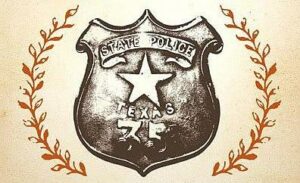
State Police Era of the Texas Rangers (1870-1873)
After the Civil War and during Reconstruction, Texas was lawless and chaotic. Between 1865 and 1868, a recorded 939 murders had been committed. The need for a statewide organization like the Texas Rangers became evident.
The Police Act of July 1870 authorized a force reaching 200 members. The State Police were authorized to arrest offenders when local law officers failed to do so. Adjutant General James Davidson was appointed Chief of the State Police although he was paid no more than his men. The police came from all walks of life: They were Black, Hispanic and White, and had fought as both Union and Confederate soldiers. Some were excellent lawmen, some were criminals.
Remarkably in the first two years by 1872, the multi-racial force made 6,820 arrests—including 587 for murder, 760 for attempted murder, and 1,748 for other felonies. The value of recovered stolen property was $200,000 (equivalent of $4.5 million today).
Despite the success of the State Police, the fact that the force employed Blacks and was commanded by controversial Governor Edmund J. Davis, a Texan who fought as a Union General during the Civil War, made it unpopular. Some older studies describe the State Police as politically oriented and corrupt, but available evidence does not substantiate this conclusion.

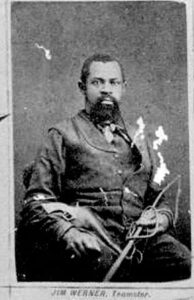

On April 22, 1873 the State Police were reconstituted into Texas Ranger units: the Frontier Battalion on the Border and the Special Force. Led by former State policeman Leander H. McNelly, the new Ranger Company included at least thirty-six other State Police members. Blacks did not serve in the ranks of the Frontier Battalion or the Special Force as they did the State Police.
They did remain active in Texas Ranger companies as teamsters and chuckwagon cooks, taking up arms in fights and gaining respect, like Teamster Jim Werner of Company B, to be pictured in Company group photos.
Sources:
Barry A. Crouch and Donaly Brice, The Governor's Hounds: The Texas State Police, 1870–1873, Univ. Texas Press, 2011.
The Handbook of Texas Online “The State Police”
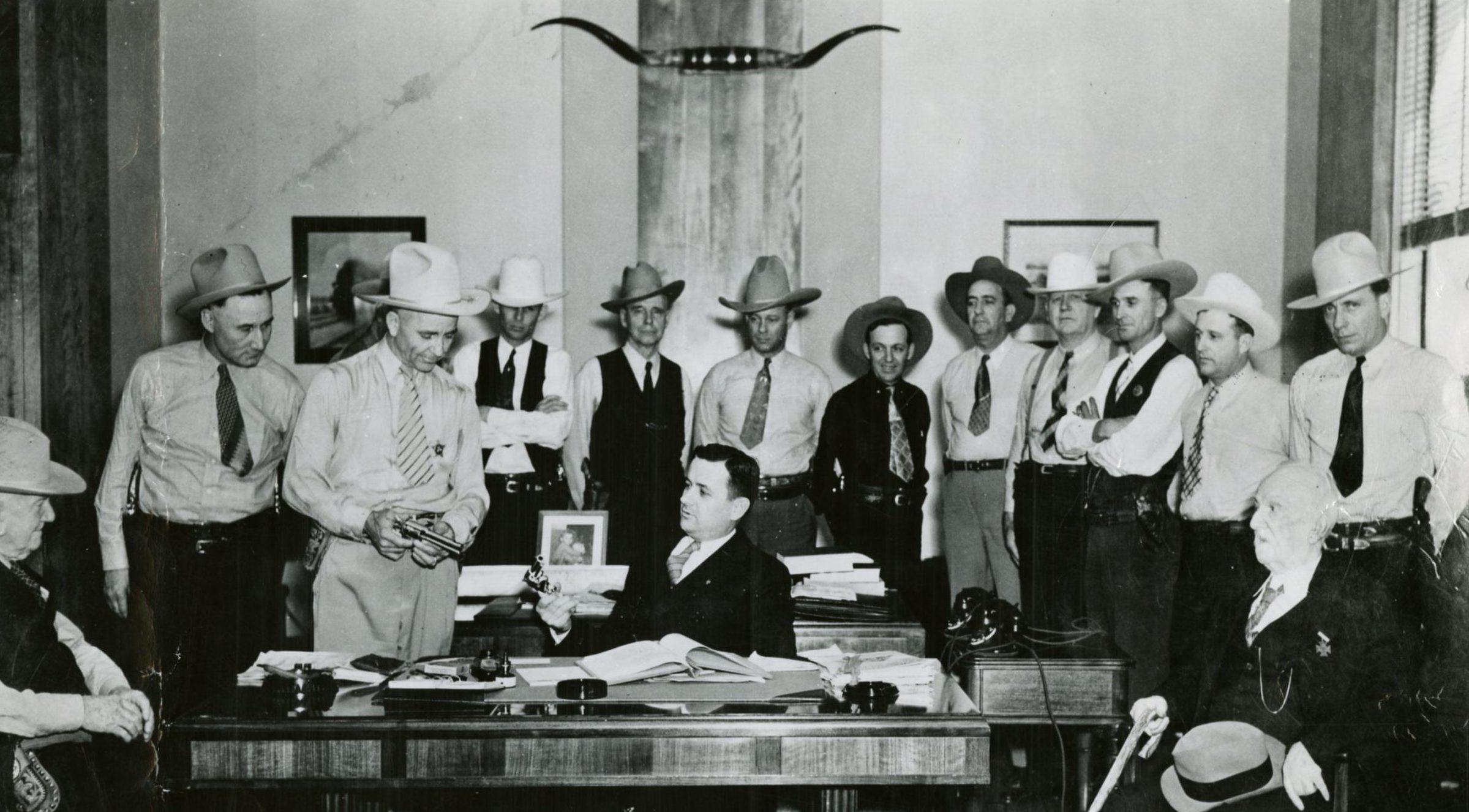
San Augustine Texas and Organized Crime in the 1930s
In early Depression-era Texas, the infamous Governors “Ma” and “Pa” Ferguson issued special law enforcement and Texas Ranger commissions to corrupt supporters rather than trained law officers. This combined with Jim Crow laws caused corruption across the state. In San Augustine County, it led to racketeering, bootlegging and the robbery and extortion of local Black sharecroppers. In 1935, community leaders, formerly silenced by fear of the retribution by organized crime, sought state intervention after a series of bloody shootouts in the street.
Newly elected Governor James V. Allred undertook reforming state law enforcement agencies. He established the Texas Department of Public Safety (DPS). Allred revoked the “Ferguson commissions” and sent a team of qualified Texas Rangers to San Augustine County to investigate reports of organized crime. This was a step in the transformation of the Texas Rangers into a professional law enforcement agency.
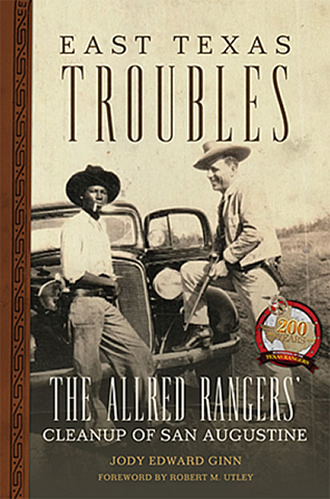
The Rangers’ investigative work in San Augustine was marked by a close collaboration between White law enforcement officers and Black residents. For the 1930s, it was a rare cooperative effort in a region historically entrenched in racial segregation.
Source: Jody Edward Ginn, East Texas Troubles: The Allred Rangers’ Cleanup of San Augustine, Univ. Oklahoma Press, 2019.
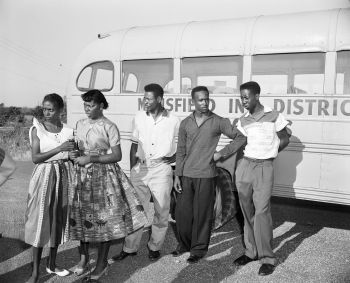
Mansfield School Desegregation (1956)
In 1956, Mansfield Independent School District (ISD), seventeen miles southeast of Fort Worth, segregated Black children to an inferior elementary school. Black teenagers were required to ride public buses, which dropped them twenty blocks from a school in Fort Worth. As a result of the 1954 U.S. Supreme Court ruling in Brown v. Board of Education, Mansfield ISD was ordered to desegregate by Texas federal judge Joe Estes. It became the first Texas ISD affected by the Brown ruling.
Mansfield school board was preparing to integrate three high school students (T.M. Moody, John F. Lawson and Mark Moody), but an angry mob of 400 White residents gathered around the school to prevent their enrollment. As a result, Texas Governor Allan Shivers, who opposed desegregation, dispatched the Texas Rangers to uphold segregation. Unlike the later 1957 violet confrontation in Little Rock, Arkansas, President Dwight D. Eisenhower did not intervene.
Gov. Shivers passed segregation laws in 1957 to delay desegregation in the state. These laws were later found to be unconstitutional and integration proceeded. In 1965 faced with loss of federal funding, Mansfield ISD desegregated.
Source: The Handbook of Texas Online “Mansfield School Desegregation (1956)”
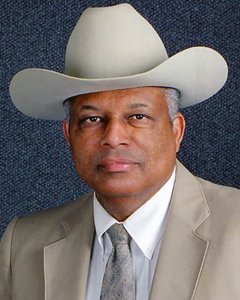
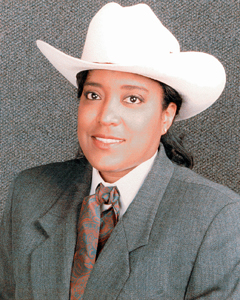
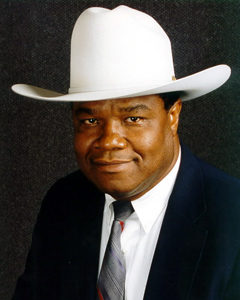
First Modern Black Texas Rangers (1988 & 1994)
Le Roy Young (service 1988-2003), a Navy veteran from Del Rio, was promoted from the Highway Patrol in 1988 and is the first known Black Texas Ranger of the 20th century. Young identifies himself as a "Black Seminole" being of Seminole Native American and African American heritage. His Ranger specializations included Hypnosis.
In 1994, Christine Nix (service 1994-2004), also a military veteran and former police officer, was promoted as the first female Black Texas Ranger. Her Ranger specializations included Forensic Hypnosis.
First Black Chief of the Texas Rangers (2004)
In 2004, Earl R. Pearson (service 1989-2005) became the first Black Chief of the Texas Rangers. He originally joined Texas Highway Patrol in 1975. Pearson's Ranger specializations included Cold Case Squad, Blood Spatter Analysis, Firearms Instructor and Driving Instructor.
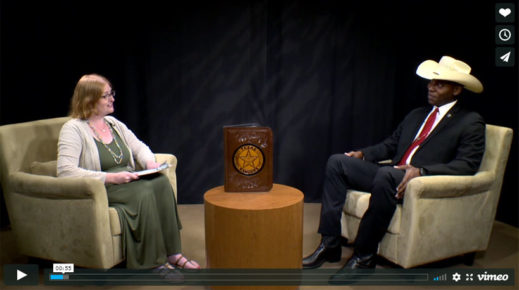
Interview with Major James Thomas (2020)
Texas Ranger Major James Thomas currently serves on Executive Assignment to the Director of Texas DPS. He holds a bachelor’s degree in Criminal Justice from Lamar University, a Master’s degree in Behavioral Science from the University of Houston-Clear Lake and a Doctoral Degree in Educational Leadership from Lamar University. This interview was conducted when he was a Lieutenant for Company "F".
